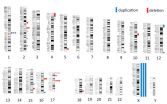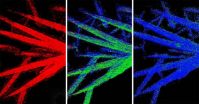(Press-News.org) WASHINGTON, DC - In order to help doctors treat the millions of people who experience their first seizure each year, the American Academy of Neurology and the American Epilepsy Society have released a new guideline on how to treat a first seizure. The guideline is published in the April 21, 2015, print issue of Neurology®, the medical journal of the American Academy of Neurology (AAN), and will be presented at the AAN Annual Meeting in Washington, DC, April 18-25, 2015, which is the world's largest gathering of neurologists.
One in 10 people worldwide have a first seizure in their lifetime. According to The International League Against Epilepsy, epilepsy is defined as one or more seizures with a high likelihood of recurrence, not due to another immediately triggering cause, such as low blood sugar.
The guideline, which reviewed all available evidence, found that taking epilepsy drugs immediately after a first seizure may reduce the risk of having another seizure. The decision to treat after a first seizure is complex because doctors must consider the risks and benefits for each individual patient.
"This is a valuable new guideline that could change the approach many doctors take to treating a first seizure and could improve patients' lives," said guideline author Allan Krumholz, MD, with University of Maryland School of Medicine and Fellow of the American Academy of Neurology. "About 150,000 adults have an unprovoked first seizure in the United States each year. Even one seizure is traumatic and affects a person's life in many social ways, such as driving a car, employment options, falling risks and the fear of having another seizure in public. This guideline clarifies when risk factors put individuals at greater risk."
Seizures that are "unprovoked" happen for no immediately known reason. According to the Institute of Medicine, one in 26 Americans will develop epilepsy in their lifetime.
The guideline shows there is strong evidence that for adults who have had a first seizure, the risk of another seizure is greatest within the first two years. The risk ranges from about a one-in-five chance, or 21 percent, to nearly a one-in-two chance, or 45 percent.
The guideline also found strong evidence that the risk of a second seizure is greatest in people with a previous brain problem, such as head injury, stroke, or brain tumor and in those with an EEG test result that shows signs of epilepsy. The analysis shows moderate evidence that the risk is greatest in people with a significant abnormality on imaging tests of the brain and in those who had a seizure during sleep.
The guideline found moderate evidence that immediate treatment with an epilepsy drug can lower this risk.
However, moderate evidence also shows that over the longer term of more than three years, immediate treatment with an epilepsy drug, rather than waiting for another seizure before treating, is unlikely to increase or decrease the likelihood of long-term improvement or seizure freedom.
The guideline notes that aside from affecting lifestyle choices, epilepsy drugs carry risks of side effects ranging from seven to 31 percent.
"This guideline does not give a simple, black-and-white recommendation whether an adult should immediately be started on an epilepsy drug," said Jacqueline French, MD, with the New York University Langone Comprehensive Epilepsy Center and Fellow with the American Academy of Neurology. "What is most important is that the decision whether to immediately treat a first seizure requires meaningful conversation between patient and doctor so that the patient's individual circumstances, balance of risks and benefits, and personal preferences are understood and accounted for."
The guideline was endorsed by the American Neurological Association and the World Federation of Neurology.
The guideline was supported by the American Academy of Neurology.
INFORMATION:
To learn more about epilepsy, please visit http://www.aan.com/patients.
The American Academy of Neurology, an association of 28,000 neurologists and neuroscience professionals, is dedicated to promoting the highest quality patient-centered neurologic care. A neurologist is a doctor with specialized training in diagnosing, treating and managing disorders of the brain and nervous system such as Alzheimer's disease, stroke, migraine, multiple sclerosis, brain injury, Parkinson's disease and epilepsy.
The American Epilepsy Society (AES) is a non-profit medical and scientific society. Our individual members are professionals engaged in both research and clinical care for people with epilepsy from private practice, academia and government. For nearly 80 years, AES has been unlocking the potential of the clinical and research community by creating a dynamic global forum where professionals can share, learn and grow. AES champions the use of sound science and clinical care through the exchange of knowledge, by providing education and by furthering the advancement of the profession.
For more information about the American Academy of Neurology, visit http://www.aan.com or find us on Facebook, Twitter, Google+ and YouTube.
Media Contacts:
Rachel Seroka, rseroka@aan.com, (612) 928-6129
Michelle Uher, muher@aan.com, (612) 928-6120
Natalie Judd, natalie@bigvoicecomm.com, (203) 605-9515
WASHINGTON, DC, APRIL 20, 2015--A new guideline released today by the American Academy of Neurology (AAN) and the American Epilepsy Society (AES) found that administering an antiepileptic medication immediately after a first seizure reduces the risk of having another seizure within two years. The guideline, authored by Allan Krumholz, MD, a professor of neurology at the University of Maryland School of Medicine and physician at the Maryland Epilepsy Center at the University of Maryland Medical Center, is the first to address treatment of a first seizure in adults. A previous ...
NEW YORK, NY (April 20, 2015) -- A significant proportion of children with chronic kidney disease (CKD) have unsuspected chromosomal imbalances, including DNA anomalies that have been linked to neurocognitive disorders, according to a new Columbia University Medical Center (CUMC) study. The findings suggest that routine genetic screening of children with CKD could lead to earlier and more precise diagnoses, as well as to more personalized monitoring, prevention, and treatment. Details of the study were published today in the online issue of the Journal of Clinical investigation.
"With ...
Every year, more than 120 million prescriptions are written worldwide for thiazide drugs, a group of salt-lowering medicines used to treat high blood pressure. These drugs are often work very well, and over decades have saved hundreds of thousands of lives.
But in some patients, thiazides are not effective; in others they lower blood pressure for a while and then stop working. The reasons for this have remained a mystery. Now, a new study by researchers at the University of Maryland School of Medicine (UM SOM) has revealed a key mechanism for this failure.
Paul Welling, ...
Following a first seizure, physicians should discuss with patients whether it is appropriate to prescribe medication to reduce risk of another seizure, according to new guidelines released at the American Academy of Neurology meeting.
The guidelines, which were a collaboration of authors at several North American medical institutions including NYU Langone Medical Center, found adults who experience a first seizure may have risk of another seizure that's greatest within the first two years. Adults with prior neurological trauma, abnormalities on EEGs and imaging may be ...
Access to high-quality medicine is a basic human right, but over four billion people live in countries where many medications are substandard or fake. Marya Lieberman of the Department of Chemistry and Biochemistry at the University of Notre Dame and Abigail Weaver a postdoctoral associate in the University's Department of Civil Engineering and Environmental and Earth Sciences took up the challenge of how people in developing countries could detect low quality antimalarial drugs without expensive equipment and without handling dangerous chemicals.
The solution they ...
MADISON, Wis. -- In a move that could improve the energy storage of everything from portable electronics to electric microgrids, University of Wisconsin-Madison and Brookhaven National Laboratory researchers have developed a novel X-ray imaging technique to visualize and study the electrochemical reactions in lithium-ion rechargeable batteries containing a new type of material, iron fluoride.
"Iron fluoride has the potential to triple the amount of energy a conventional lithium-ion battery can store," says Song Jin, a UW-Madison professor of chemistry and Wisconsin Energy ...
Toronto, CANADA - Imagine living a healthy, normal life without the ability to re-experience in your mind personal events from your past. You have learned details about past episodes from your life and can recite these to family and friends, but you can't mentally travel back in time to imagine yourself in any of them.
Cognitive scientists from Baycrest Health Sciences' Rotman Research Institute in Toronto had a rare opportunity to examine three middle-aged adults (two from the U.S., the other from the U.K.) who essentially live their lives in the "third person" because ...
Tryptophan is an amino acid, one of the building blocks of proteins. It is used extensively to study how proteins change their 3D structure, and also how they interact with other proteins and molecules. This is studied with a fluorescence technique called FRET, which measures the transfer of energy from tryptophan to another molecule. But in some cases, FRET data could be distorted because tryptophan transfers an electron instead of energy. Using a unique spectroscopic technique, scientists at EPFL have now confirmed for the first time that this is indeed the case. The ...
CAMBRIDGE, Mass. (April 20, 2015) - A novel approach that allows real-time imaging of the immune system's response to the presence of tumors--without the need for blood draws or invasive biopsies--offers a potential breakthrough both in diagnostics and in the ability to monitor efficacy of cancer therapies.
The method, developed in the lab of Whitehead Institute Member Hidde Ploegh and reported online this week in the Proceedings of the National Academy of Sciences (PNAS), harnesses the imaging power of positron emission tomography (PET), which is normally used to monitor ...
PHILADELPHIA, April 20, 2015 - New findings hidden within the complex machinery behind the vicious cycle of chronic inflammation and cancer are presented today by researchers from the University of Pittsburgh Cancer Institute, partner with UPMC Cancer Center, at the American Association for Cancer Research (AACR) Annual Meeting in Philadelphia.
The research is funded by the National Institutes of Health (NIH) and Fondazione RiMED, of Palermo, Italy.
Inflammation is an important immune system tool that helps the body rid itself of foreign invaders, such as bacteria. ...

